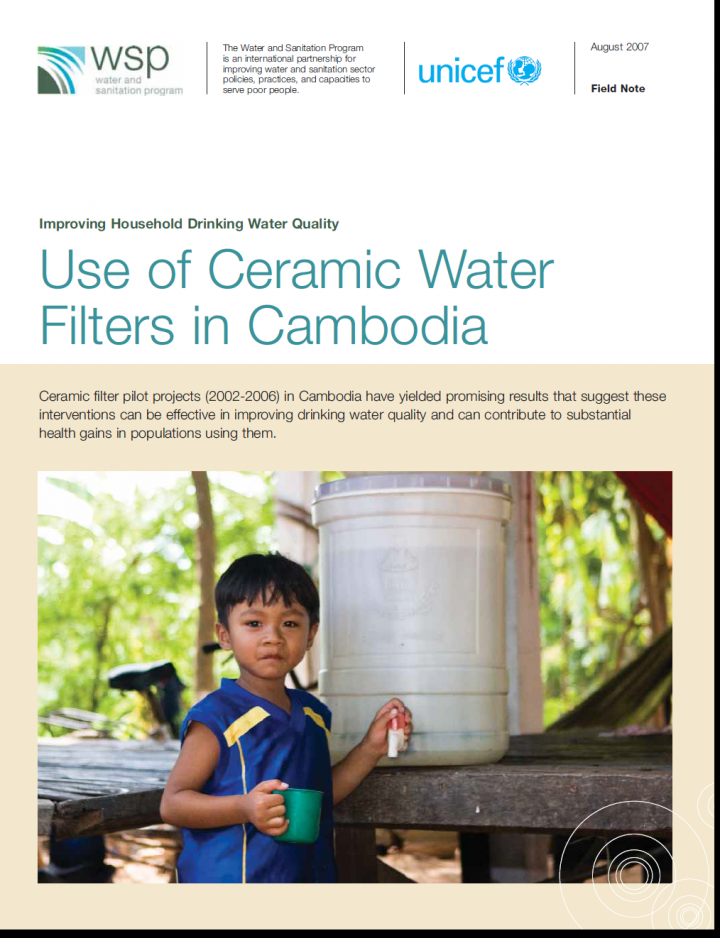Improving Household Drinking Water Quality - Use of Ceramic Water Filters in Cambodia
Brown, J., Sobsey, M., Proum, S. (2007)

Published in: 2007
Pages: 44
Publisher:
WSP
Author:
Brown, J., Sobsey, M., Proum, S.
Uploaded by:
SuSanA Admin
Partner profile:
common upload
1682 Views
25 Downloads
Household-scale ceramic filtration technology is considered among the most promising options for treating drinking water at the household level in developing countries (Lantagne 2001; Sobsey 2002; Roberts 2004). Its use is Cambodia is widespread and growing, with the involvement of local and international NGOs and government efforts that have been supported by UNICEF, WSP-Cambodia, and others. Although several different kinds of ceramic filters are used for household-scale water treatment worldwide, among the most widespread is that promoted by Potters for Peace, a US and Nicaragua-based NGO; the Cambodian version is known as the Ceramic Water Purifier (CWP). It has been used in Cambodia since its introduction in 2001.
Based on early successes in Cambodia (Roberts 2004), further investment in the technology is planned by NGOs and the Cambodian government. Stakeholders identified evaluation of the CWP experience to date in the country as vital to inform the scale up process and to identify lessons learned in the first 4 years of production and implementation. Part of this evaluation was an independent study commissioned by UNICEF and WSP Cambodia to critically examine two major implementation efforts to date in Cambodia undertaken by the two main producers, IDE and RDI. The goals of the study were to characterize the microbiological effectiveness and health impacts of the CWP in target populations, and to identify successes and potential challenges facing the scale-up and implementation of the technology. The results of the study and program recommendations are presented here.
Bibliographic information
Brown, J., Sobsey, M., Proum, S. (2007). Improving Household Drinking Water Quality - Use of Ceramic Water Filters in Cambodia. WSP
Filter tags
Case studies in other formats East Asia & Pacific English Politicians and local decision makers Practitioners















